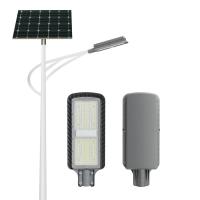Shenzhen UNIKE Technology Limited is a high-tech manufacturer of
LED lighting products, integrated with R&D, production and
sales in one. UNIKE focuses on lighting solution of both outdoor
and indoor (mainly produces LED street light, LED floodlight, LED
high bay light), insists on high efficiency, green energy, and
environment friendly, aims to be the pioneer of energy-saving lamps
in the new era.
UNIKE led products have obtained all kinds of domestic and foreign
authority certification, such as CE, RoHS, FCC, TUV, ETL, CETL, DLC
etc., are widely used on street, tunnel, bridges, wharf,
billboards, landscape, architecture, city lightening, warehouse,
workshop, shopping mall, etc., and exported a lot to North America,
Europe and others such as Australia, New Zealand, Japan, Korea, and
Southeast Asian countries. UNIKE is deeply recognized and favored
by customers from all over the world.
Our engineers have more than 10 years of LED experience and our
reliable sales team will provide high quality technical products
and services to ensure you an enjoyable business experience.
Our success is determined by the satisfaction and confidence of our
customers in what we do and how well we do it.














